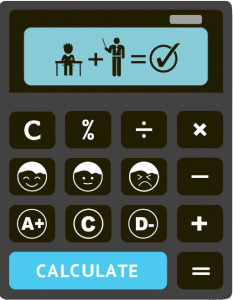Overview
As part of your year 6 maths curriculum, understanding the coordinate plane and the various forms of transformation is crucial. Let’s explore the subtopics you will come across under “Location and Transformation”.
Learning Outcomes
After reading this article, you will:
- Understand the concept of the coordinate plane and how to locate points using ordered pairs.
- Learn about different types of transformations, including translation, reflection, rotation, and dilation.
- Discover the effects of each transformation on shape, size, and orientation.
- Recognize the significance of combining transformations to reach a final position or size.
The Coordinate Plane
Imagine a vast mathematical playground where shapes and points interact. This playground is known as the coordinate plane, which is created by two intersecting number lines. One line, the x-axis, runs horizontally, while the other line, the y-axis, runs vertically. At the point where they meet, called the “origin,” both x and y values are zero. The coordinate plane is shown in the figure below.
To locate any point on the coordinate plane, we use an ordered pair (x, y). The first number, called the x coordinate, represents the position along the x-axis, and the second number, called the y coordinate, represents the position along the y-axis. Remember, the order of the numbers in the pair matters! These coordinates allow us to pinpoint exact locations and explore the mysteries of geometry.
The coordinate plane is divided into four quadrants (or quarters). If a point is in the 1st quadrant, both its x and y coordinates are positive. For a point in the 2nd quadrant, the x coordinate is negative whereas the y coordinate is positive. Likewise, for a point in the 3rd quadrant, both x and y coordinates are negative. Finally, for a point in the 4th quadrant, the x coordinate is positive whereas the y coordinate is negative. The quadrants and the locations (coordinates) of four points named A, B, C and D are shown in the figure below.
Transformation
Imagine you have a shape, and you want to change its position, orientation, or even size while preserving its essence. That’s where transformations come into play. In year 6 maths, you will encounter four types of transformations: translation, reflection, rotation, and dilation.
Translation
Translating is like scooting a shape left, right, up, or down from its original position. However, it’s important to note that a translated shape maintains its shape, size, and orientation with respect to the coordinate plane. Only its position changes. For example, think of sliding a square three units to the right or shifting a triangle two units upward.
Reflection
Have you ever looked into a mirror and noticed how your reflection mimics your movements? Well, reflection in maths is quite similar! When we reflect a shape across a line, that line acts as a mirror. The image of the shape appears on the other side of the mirror line. During reflection, the shape’s shape and size remain unchanged, but its orientation with respect to the coordinate plane changes. Visualize flipping a triangle over a vertical line or a square over a horizontal line.
Rotation
Rotation involves turning a shape around a fixed point. That fixed point can be either on the shape or outside it. When a shape undergoes rotation, its shape and size remain the same, but its orientation with respect to the coordinate plane changes. Think of spinning a triangle 90 degrees clockwise or counterclockwise around a specific point.
The figure below shows the translation, reflection and rotation of the green triangle (the original shape). The red dot is used as a reference point. Note how its position and orientation change with respect to the original shape.
Dilation
Dilation is all about resizing a shape. Enlarging a shape means multiplying each of its side lengths by a specific factor, while diminishing a shape means dividing each side length by a factor. The constant factor that determines the scale of the transformation is called the scale factor. When a shape undergoes dilation, its size changes, but its shape and orientation remain the same. Imagine stretching a rectangle to twice its original size or shrinking a triangle by a factor of three.
The figure below shows the yellow square (original shape) dilated to give the black square (final shape). Can you figure out the scale factor?
Combination of Transformations
Sometimes, a single transformation is not enough to reach the desired final position or size. In such cases, we use a combination or series of transformations. It’s crucial to think step by step, considering each transformation individually, to determine the overall effect. For instance, you might need to rotate a shape and then translate it or reflect a shape before dilating it.
Look at the figure below. A single transformation can’t explain the final position with respect to the initial position.
There is an intermediate step as shown in the figure below.
As you now see, the original shape was first translated 4 units down and 5 units to the right and then reflected to arrive at the final shape.
Wrap Up
By understanding the coordinate plane and the different types of transformations—translation, reflection, rotation, and dilation—you have gained a powerful set of tools to explore the mathematical universe. Remember, practice makes you perfect!
For any additional help or to explore more year six maths topics, please feel free to contact us. We are here to support your mathematical journey and help you unlock the secrets of numbers and beyond. Happy exploring!












